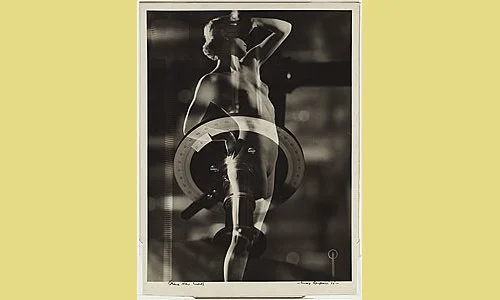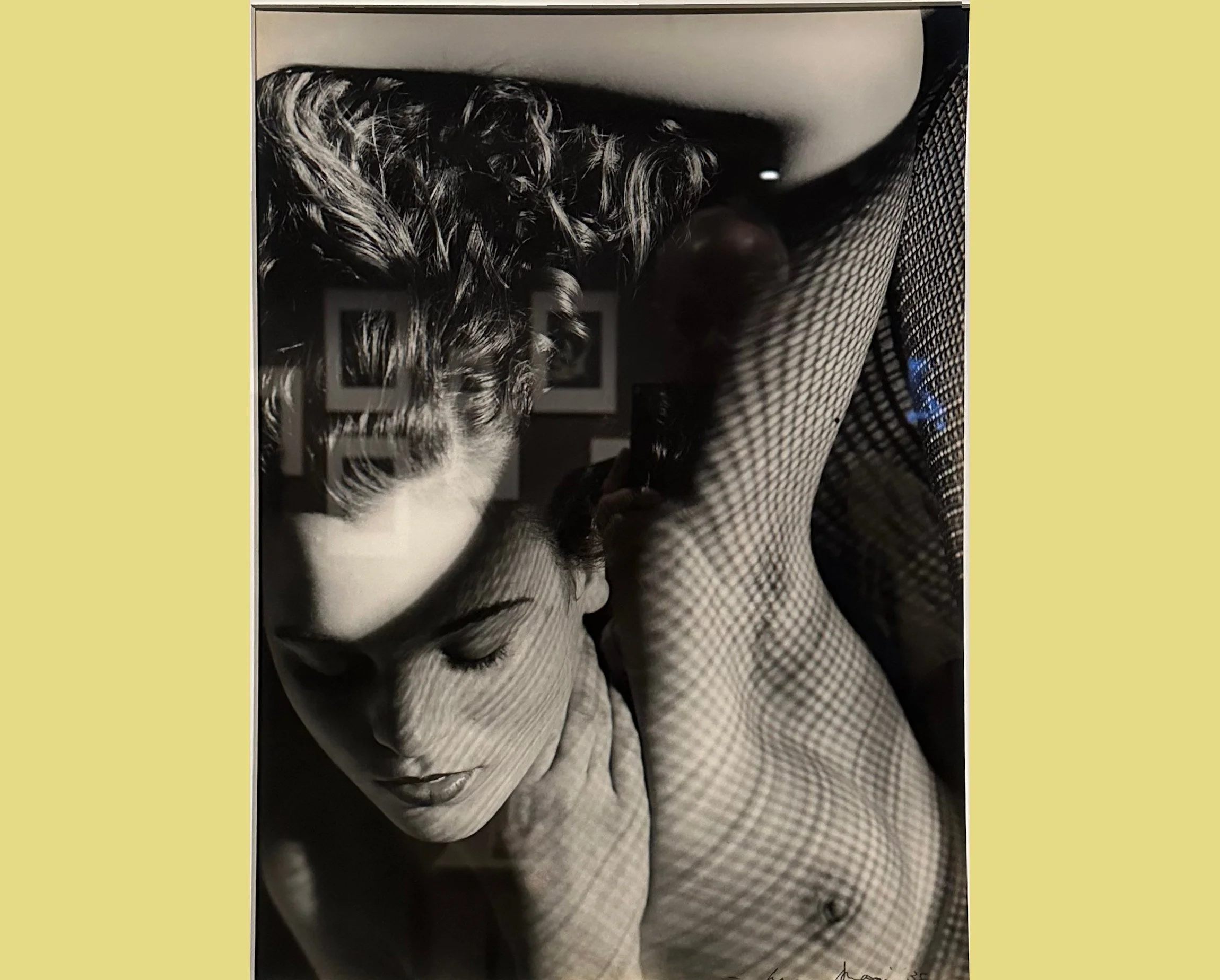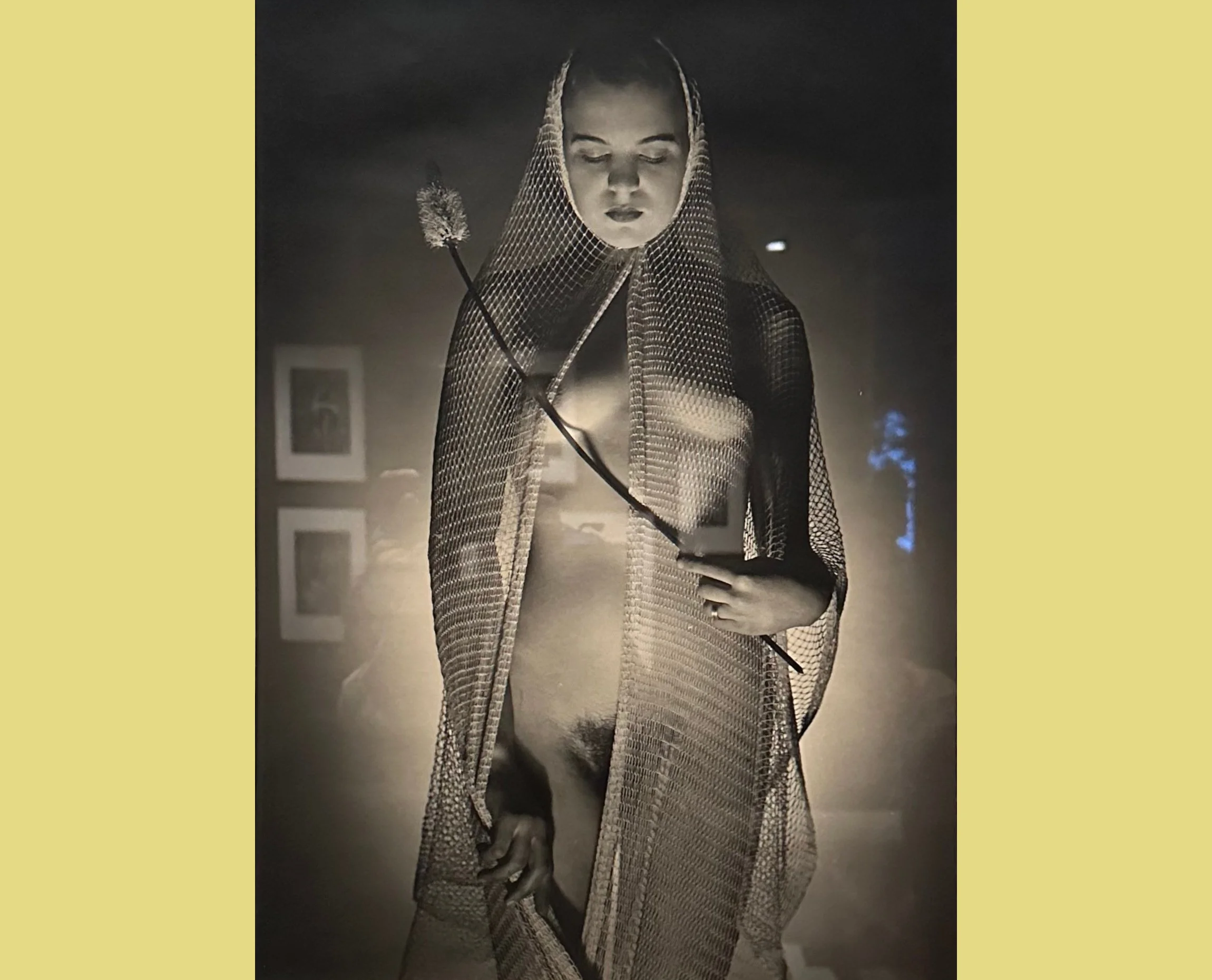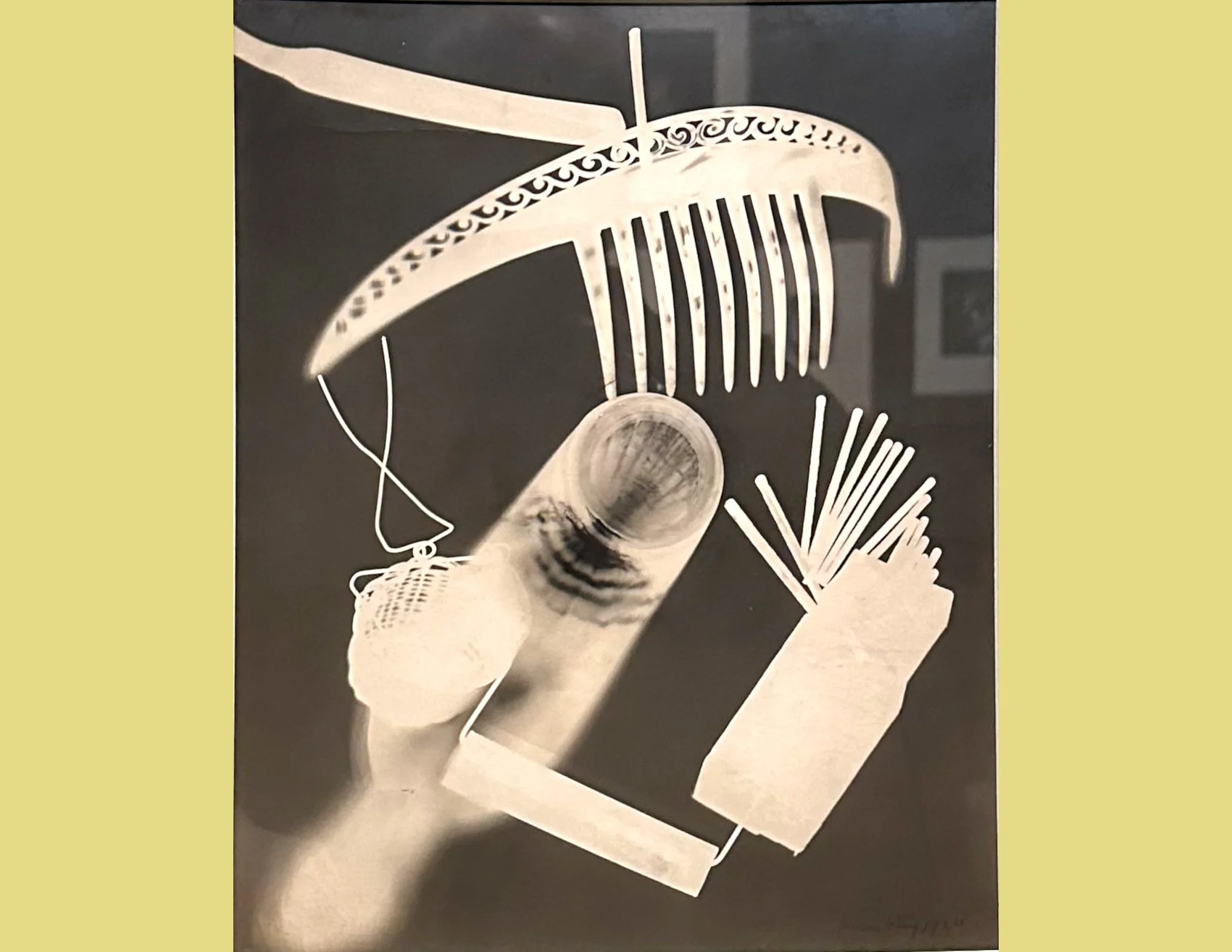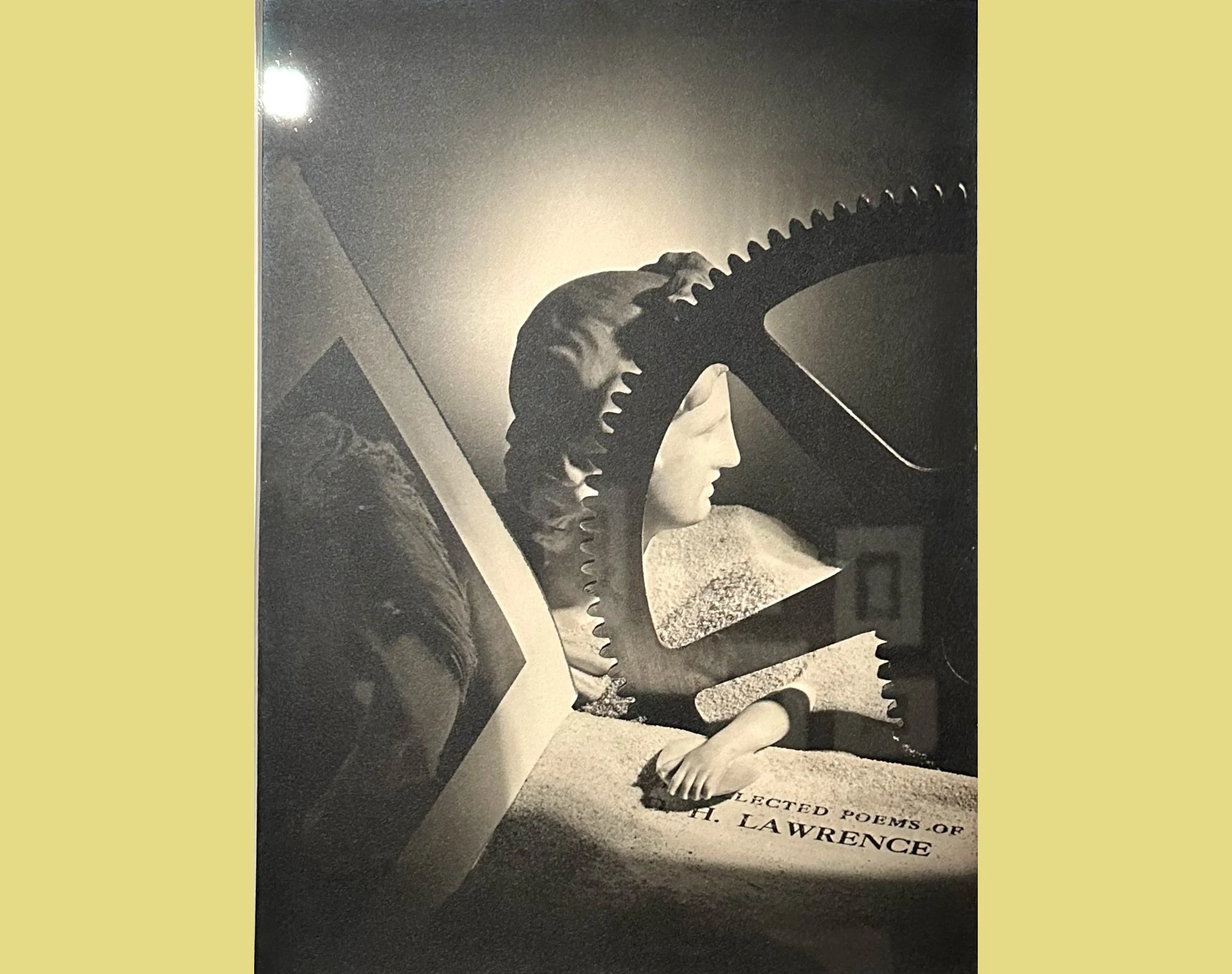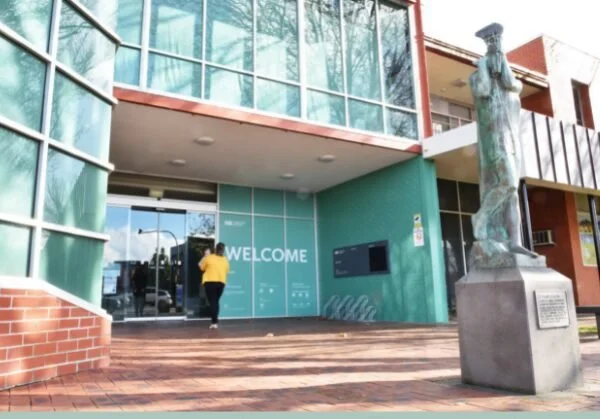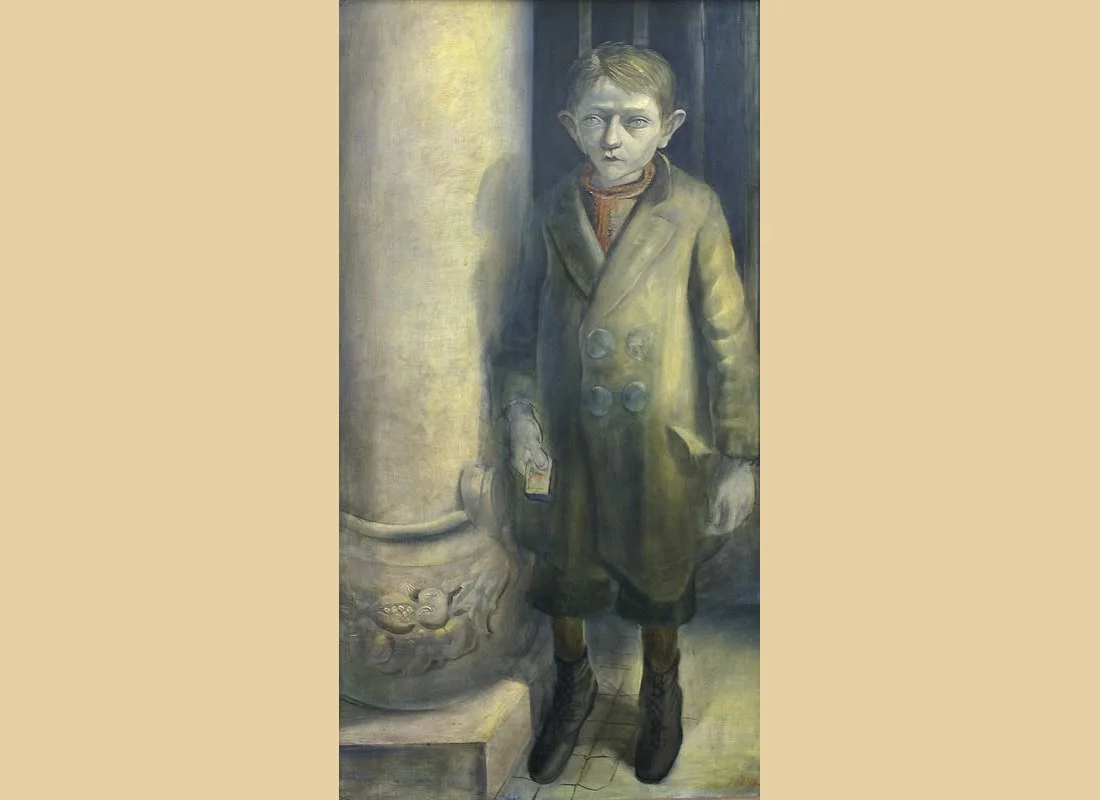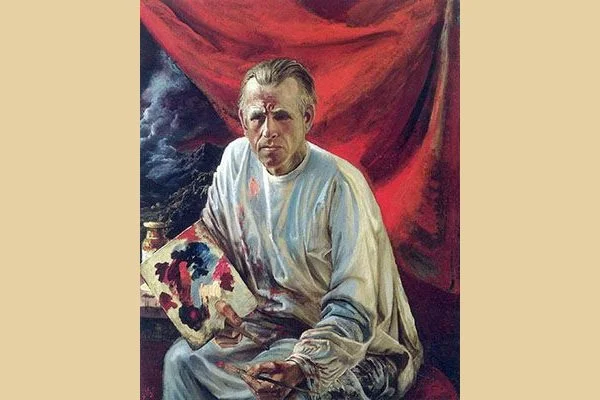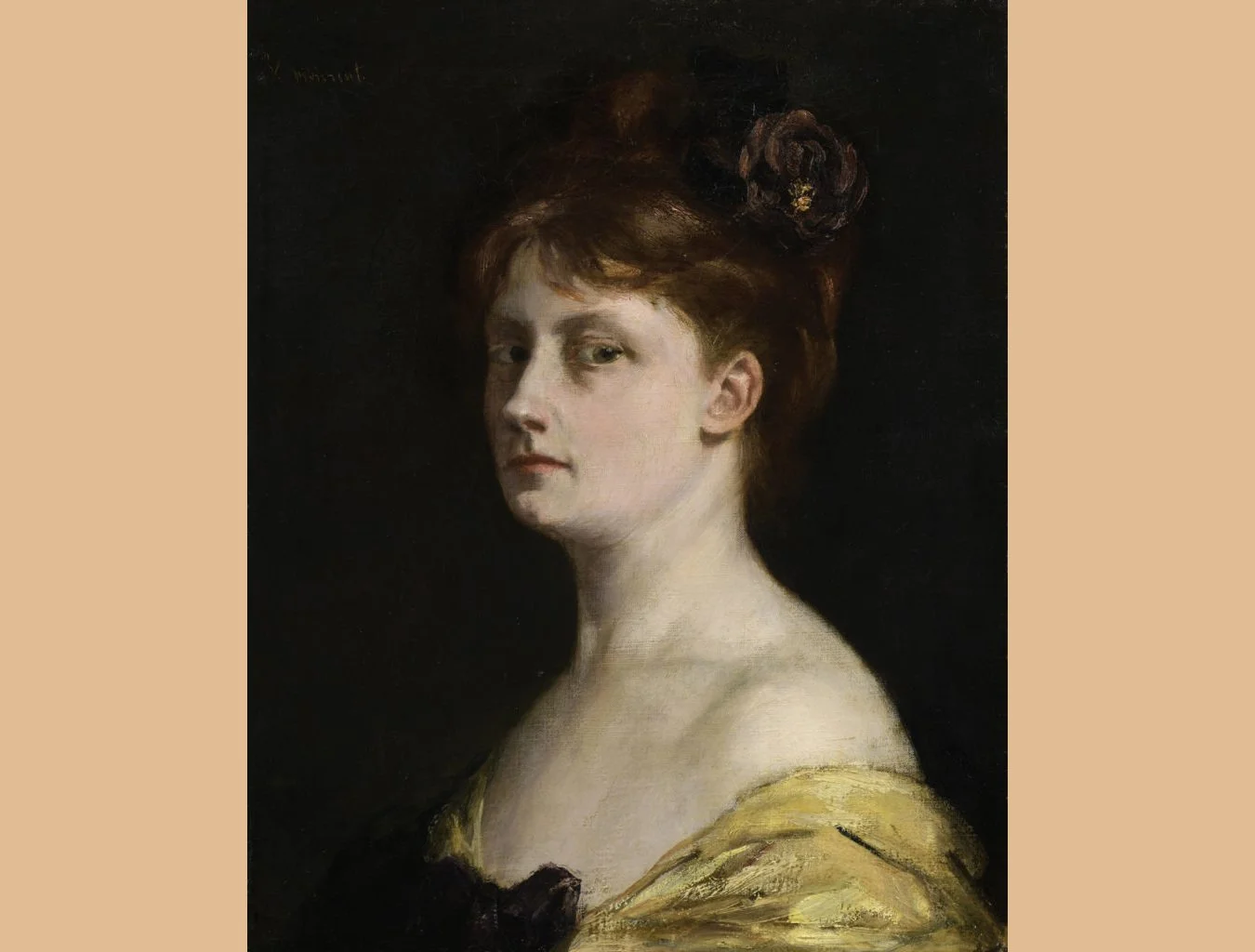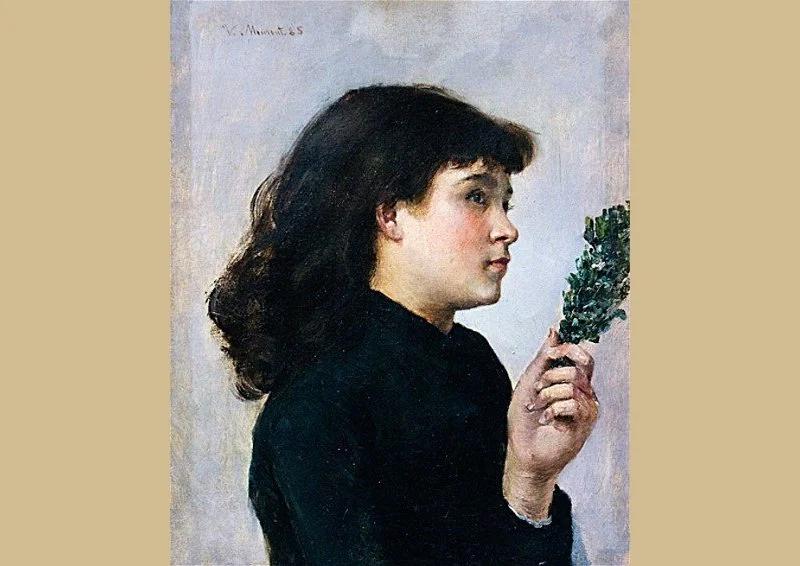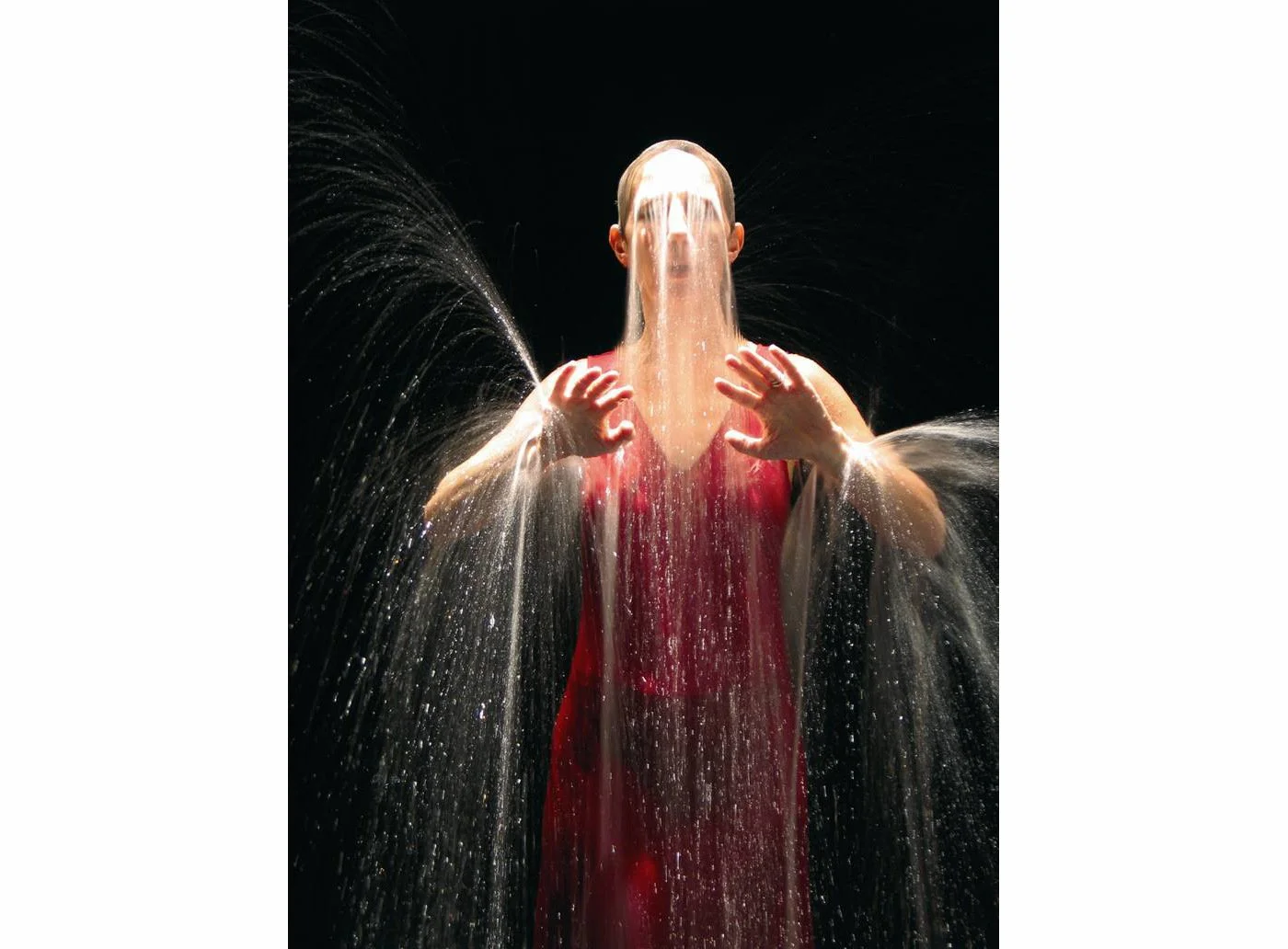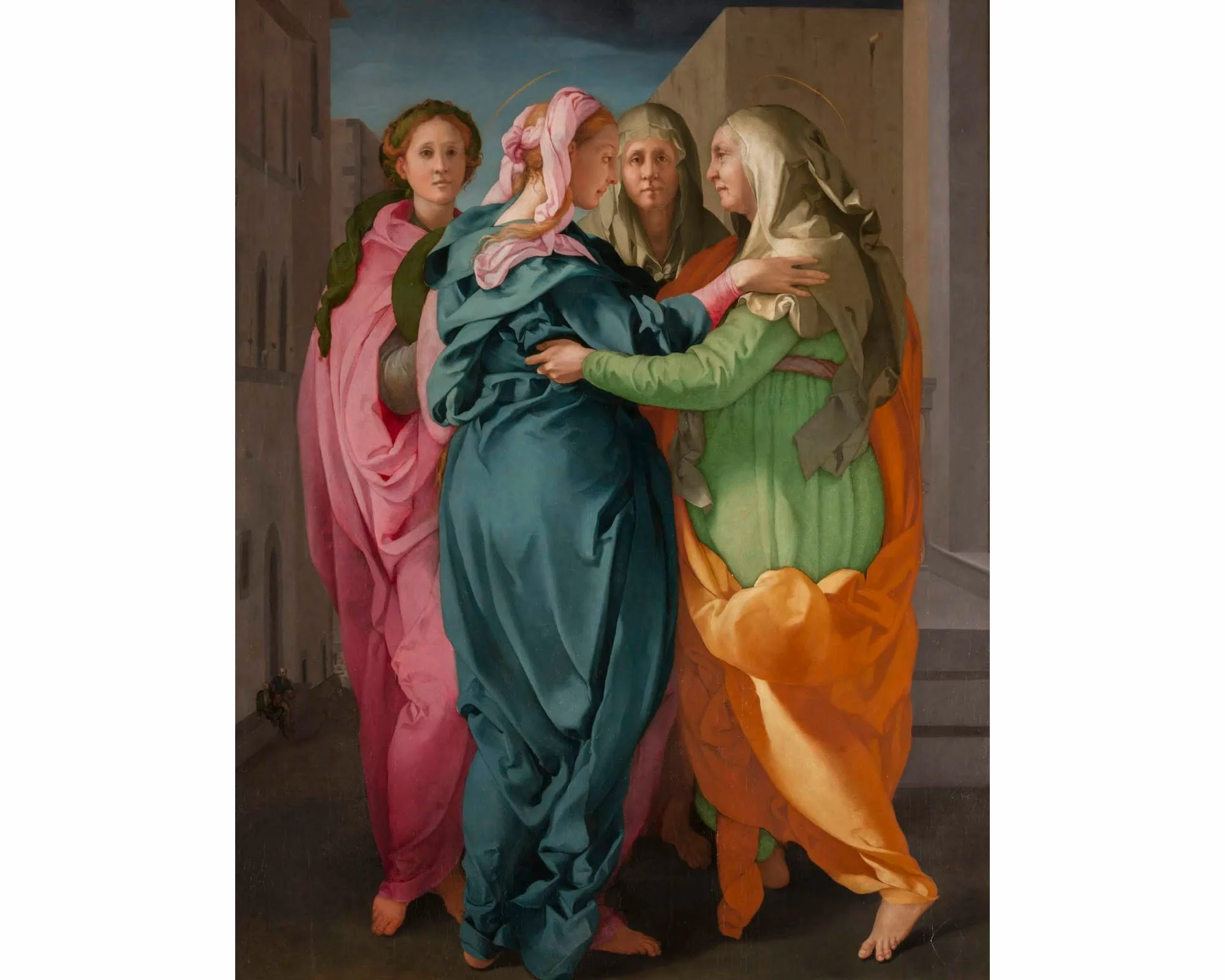Ray & Dupain At Heide
Heide Museum Of Modern Art is presenting a unique photographic exhibition featuring American artist Man Ray and Australian photographer Max Dupain. Both were noted for their experimentation with photographic techniques and their surrealist imagery. There are more than 200 prints on display, and the subject matter includes still life, nudes, portraiture, fashion and advertising.
Dupain: Brave New World, 1935
Walking through this exhibition, I found myself drawn more closely to the work of Dupain. He seemed more experimental and surrealist in his photography. His work is more compelling and hovers between reality and otherworldliness to a greater degree than Ray. By the mid 1930’s, Dupain made the transition from realism to more modernist values in his photography where light, pattern, framing, relations between objects and experimentation became more important.
Dupain: Jean With Wire Mesh, 1935
Both artists experimented with solarisation - a process of extreme overexposure in a camera where bright areas appear black or grey in the final image - and photomontage. Both were romantically involved with, and influenced by women who were also talented photographers; in Ray’s case it was Lee Miller and in Dupain’s it was Olive Cotton who he later married.
Dupain: The Bride, 1935
In 1921 Man Ray began experimenting with photograms, also known as “cameraless” photographs which involved placing objects on photosensitive paper and exposing the paper to light very briefly in the darkroom. The paler areas are where the objects sat and the darker areas are the spaces around them, thus creating an inverse image. This technique enabled Ray to blur the boundaries between realism and abstraction. He used transparent materials in an effort to suggest alternative realities. He gave this technique the title “Rayographs”.
Ray: Rayograph
According to Lesley Harding, artistic director at Heide, these two artists operated in isolation on opposite sides of the world, they didn’t know each other and never met. “But they are working in the same sorts of ways, applying Surrealist imagery to their commercial photography, publishing in the same international journals and exhibiting in the same international salons for photography." It’s unclear if Ray was aware of Dupain’s work, but Dupain once wrote of Ray’s photography.
Dupain: Impassioned Clay, 1937
Dupain only ever photographed in black and white, believing that this enabled him to achieve a simplicity and directness, in addition to allowing the viewer to add their own interpretation.
Dupain: Homage To D H Lawrence, 1937
The exhibition runs until 9th November.
References;
Heide Museum of Modern Art
The Guardian
ABC News
Can The Arts Revive A Community?
Located about 300 km west of Melbourne, the rural city of Hamilton is facing tough times. It’s agricultural legacy, for so long the lifeblood of the town, is struggling and the population is stagnating. The local council believes that diversification of industry is the answer to ensure the town’s future and has backed a proposed $50m redevelopment of the Hamilton Art Gallery.
Predictably, this new development has met with anger from some local residents who claim the council is out of touch with them. They argue that the money would be spent on roads, health and education rather than on elitist pursuits. The director of Hamilton Gallery, Joshua White wants to bring the gallery to the people and give them a sense of ownership of the redevelopment.
"This art gallery only exists because of the cultural and historical history of this place … we're not changing the identity, we're amplifying it and putting it on a national scale," he says.
Hamilton Art Gallery (ABC News)
This matter brings to mind a blog I posted some time ago about a massive new performing and visual arts development in North Adams, Massachusetts, USA called MassMoCa (Massachusetts Museum of Contemporary Art). North Adams was on its knees following the closure of the local electronics industry in 1985. At its height, the Sprague Electric Company employed over 4000 people in a community of 18000 but cheap imports from Asia killed it. The factories themselves date back to the late 19th century when they started out as a print works.
Plans to transform the factory complex date back to the year after Sprague closed, 1986, when staff from the nearby Williams College Museum of Art were inspecting the facility as a suitable venue to exhibit large scale contemporary art that couldn’t be displayed in a more traditional gallery setting. They realised the buildings had much more potential than as an offshoot gallery. Several years of fundraising followed, including grants from the Commonwealth of Massachusetts, and MassMoCa opened in 1999 with 19 galleries and 9,300 m2 of exhibition space which has since more than doubled with subsequent expansions. In addition to housing galleries and performance art spaces, it also rents spaces to commercial tenants. Music festivals are also held there.
Proposed redevelopment (ABC News)
Part of Joshua White’s strategy for the revamped Hamilton Art Gallery is to have spaces dedicated for children. It's part of his vision to bring the gallery to the people and make it a space Hamilton residents feel belongs to all of them.
It’s a sad fact that currently, there is only sufficient space for the gallery to exhibit 1% of its total collection which amounts to almost 10000 pieces. Some of these pieces tell the story of the region and this needs to be communicated to the residents in order to give them a sense of ownership over the new space. Works from the gallery are regularly loaned to major galleries across the country.
In making the case for the new gallery, Joshua White points to other towns that have gained significant social and economic benefits from investment in the arts, such as Newcastle, Shepparton and Byron Bay. But he is facing considerable push back from some in the community. However a recent major exhibition at the gallery “led to a record increase in tourism and boosted visitor spending by more than $1 million each month of its four-month run.”
To fund the new development, the Southern Grampians Shire Council is seeking $30m in grants from Federal and state governments and another $30m in philanthropic donations, with council spending capped at $10m.
References;
ABC News
Sad Case of the Lost “America”
Why would anyone want to steal a toilet? When it’s a fully functioning 18 carat gold toilet worth millions - that’s why. Titled “America”, it was the creation of prankster/artist Maurizio Cattelan in 2016 and typical of works produced by this artist, its meaning is multilayered and full of contrasts.
(Guggenheim Museum)
It was a participatory piece, first installed in the bathroom of the Guggenhein Museum in New York where visitors were invited to relieve themselves in luxury while musing on the fascination of the piece. But it is believed to have had an acerbic message behind it, perhaps a satire on excessive consumption and a scathing critique on capitalism. The title “America” is thought to be a reference to the distorted American dream. Cattelan once described the piece as “art of the 1% for the 99%” that is; art by the wealthy for everyone else on the planet.
It’s reported that in 2017, the White House asked the Guggenheim for a loan of a Van Gogh painting for Donald Trump’s private apartments. The museum refused, but offered “America” instead - and received no response. It’s been suggested that “America” was an evocation of Trump’s career, but Cattelan has never confirmed this.
While on loan in the bathroom of Blenheim Palace in England in 2019, thieves broke in, ripped the toilet away from its plumbing and made off with it. The resulting flooding doing a lot of damage. Cattelan’s response to this was typical of his black humour “I’ve always loved heist films and at last I’m in one of them”.
(Insurance Journal)
There were suggestions that Cattelan may have orchestrated the heist himself, so he teamed up with the Generali insurance company for a promotional campaign for an insurance policy aimed at collectors.
Just recently, a judge in Oxford sentenced two men over the theft but there has been no trace of “America”. It’s thought to have been broken up and sold in bits. If you care to look on Artnet’s website, you will find grainy footage of the heist.
References;
Culturezvous.com
Artnet.com
Otto Dix; Painting vs Photography
Born in 1891, Otto Dix is probably best remembered for his depictions of the horrors of the First World War and its aftermath. But it’s his portraits that interest me for their striking objectivity.
Shortly after the outbreak of WW1, Dix volunteered for active service. He stated that he needed to experience life in all its gory detail for himself and in doing so, was following the teachings of Freidrich Neitsche and his philosophy of chaos, destruction and rebirth. He was trained as a machine gunner and took part in the grinding trench battles in France and Flanders. In 1917, he saw service in the disastrous campaign in Russia. Dix states that war “is the work of the devil”. He recorded his experiences of war in a series of drawings, sketches and paintings in gouache. He felt that there had been a dimension of reality that had not been dealt with in art - the dimension of ugliness. He once described bomb craters as the eye sockets of the earth.
(Flickr)
Whilst Dix acknowledges that war was a dreadful thing, he thought there was something awesome about it and he didn’t want to miss it at any price. “You had to see people out of control in that way to know anything about man.”
After the war, Dix attended the State Academy of Arts in Dresden. The Weinmar Republic had an estimated 1.5 million war disabled and more than a million war orphans and Dix painted images of all this in his determination to depict the terrible consequences of war.
In February 1923, Dix married and has 3 children whom he painted over and over again. In the early 1920’s Dix began a series of startling portraits including the Match Peddler (2nd version) which was thought to be a masterpiece of objective realism. It’s argued that what distinguishes this painting from photography is Dix’s poetic vision which otherwise might have reduced this image to a cliche.
(Pinterest)
He described portrait painting as one of the most stimulating and challenging tasks an artist can take on. He starts with an exact drawing with the subject in front of him, then transfers the drawing to the canvas with the subject still in front of him and then paints without the subject. With the second portrait of his parents from 1921, Dix is thought to have completed the transition from the expressive style of his earlier work to an objective style.
(Britannica)
“Seeing is the basis of a good portrait, a person’s appearance is always an expression of character, the exterior expresses the interior. In fact, the outside and inside are identical.” He believed that a person’s exterior appearance including the posture always tells the painter something of their inner life.
Self Portrait (1942) (The Art Story)
“It is one those arrogant and naive fallacies put about by the modernists that portrait painting has been replaced by photography. Photography can never record more than a moment. It can never create forms that are specific and personal, for this capacity requires the artistic powers and intuition of the painter. A hundred photographs of a person will only produce a hundred snapshots, but never the phenomenon as a whole, only the painter can do this.” I’m not so sure about this, but photography has developed a great deal since Dix’s time and has evolved into a powerful medium. The work of Diane Arbus and Imogen Cunningham comes to mind.
Lawyer Fritz Glaser (wikiart)
“When painting a portrait, it is best not to know the subject at all, I don’t want to know him, I only want to see what is there, the outside. The inside follows automatically, it is reflected in what you see”. He believed that if you know a person too well the eye loses its impartiality. “The first impression of a person is always the right one.” He said that after completing a portrait he may change his mind about the subject but that doesn’t bother him. For him, the first impression has to be retained in its original freshness, if he works on a portrait for too long, he might “smooth out the rough edges”.
It’s claimed that in his portraiture and other works, Dix sort to exorcise out all his war experiences for ever.
His work formed part of the Neue Sachlichkeit ("New Objectivity") movement, which also attracted George Grosz and Max Beckmann in the mid 1920s.
References;
“Otto Dix - Controversial Painter of the New Objectivity movement” - womocoCULTURE
TheArtStory
Victorine Meurant from model to artist
At the time it was first exhibited, Edouard Manet’s “Le Dejeuner sur L’herbe” (Picnic On The Grass) created an all mighty scandal. In 1863 it was considered completely immoral for a naked woman to be seen with fully dressed men. Of course there had been naked women depicted in art before, but they were demure river goddesses, nymphs or suchlike. But Manet’s nude was a contemporary woman staring directly at the viewer in a nonchalant, couldn’t care less manner.
Manet, ‘Le Dejeuner Sur L’herbe’, 1863 (Wikipedia)
So if it was audacious of Manet to produce such a provocative painting (in 1863 it was illegal for men and women to be seen bathing together), what about the woman who posed for him? Her name was Victorine Meurant and there is some conjecture about how they met. Manet was a very secretive guy, to the extent that almost no one knew he was married until after the event.
Meurant was born in a working class area of Paris in 1844 and being a model in those days was not a respected occupation. People would draw parallels being modelling and prostitution and the general consensus was that she was a sex worker and alcoholic who was probably dead by the age of 50. Instead, she made it to 83 and became a successful artist.
Manet, ‘Olympia’, 1865 (Wikipedia)
It’s been suggested that Manet met Victorine at the Palais de Justice where Manet’s father, Auguste was a very senior and highly respected judge presiding over domestic affairs, patrimony suits and affairs of illegitimacy. Victorine was a part time model and street singer, the likes of whom were regularly brought before the courts for having (supposedly) led men astray. So it’s entirely possible that Manet junior met her whilst she was appearing before Manet senior.
Victorine was thought to have been gay. There is no evidence that she ever married and Manet once wrote about seeing her at a party with her arms around another woman. He painted her obsessively for a decade, which included another provocative work, “Olympia.”
Meurant, Self Portrait, 1876 (Art Herstory)
After sitting for Manet, Victorine went to art school at the Academie Julian. She regularly exhibited at the Paris Salon, quite an achievement for someone poor and female. Her self portrait made it into the 1876 Salon, the same year that Manet’s work was rejected. Little else is known of Victorine Meurant and images of her paintings are rare, but she is hardly the only woman to have made the transition from model to artist. One only has to think of Suzanne Valadon for a start.
Meurant, ‘Palm Sunday’, c1880 (Art Herstory)
So what was the inspiration behind Manet’s provocative paintings? In 1863, the year “Le Dejeuner sur L’herbe” was painted, Manet senior, the respected judge, died of syphilis. So perhaps his paintings of that period were a reference to the pompous hypocrisy and double standards that was rife in Parisian society. But then, Edouard died of the same disease in 1883 aged just 51.
References;
Drema Drudge - Victorine Meurant More Than Just a Model
Waldemar Januszczak - The Art Mysteries
The Much Traveled Painting
Some 22 years ago I made the fateful decision to leave my hometown of Melbourne and make for “the bush.” I decided to move to the outskirts of an old goldmining town called Dunolly, about 170 kms north-west of Melbourne. I had a mortgage to service and had run out of work - so the move out of the city seemed the only option. Apparently, I had become what was commonly referred to as an economic refugee.
With two qualifications under my belt (including a degree in fine art), I decided I would be damned if I went back to school and besides, I was in my late 40’s by that stage. So I figured that my employment prospects were limited so say the least. My Centrelink case manager warned me that the then Howard Government’s proposed changes to job seeking represented bad news for people like me, so that settled it - off I went.
My home at Dunolly, central goldfields area in Victoria
All this, and the fact that I was being continually bitten by the art bug led me to focus entirely on my art practice. I was ignoring art history of course, which told me that most artists move from the bush to the big city in order to “make it”, not the reverse. You’ll notice that large shed on the far right of the image above - instant studio I thought, with concrete floor and power. Never mind the fact that temperature inside climbed into the high 40’s in summer and dipped to near freezing in winter.
Within about two months of the move, I had my first panic attack. At the time I didn’t understand what was going on until I had these attacks diagnosed. Apparently, it was my internal organs asking “what the hell have you done?” But I decided to plough on, making friends along the way and getting involved in several exhibitions. The panic attacks didn’t subside however, and the message I was getting was clear - get back to civilization.
“View From The North Tower”, oil on canvas on board, 60 cm x 75 cm
By a very circuitous route (Kyneton, Coronet Bay, Drouin) I have made my way back to my natural habitat - Melbourne. Several of my paintings have made that long and lonely journey with me, including the one pictured above which was painted in 2007. The scene is the former psychiatric hospital ‘Willsmere’ in Kew, and I’m delighted that it is now hanging at the Town Hall Gallery in Hawthorn as part of the “Impressions Of Place” exhibition, staged by MAVA (Melbourne And Victorian Artists). Being involved with MAVA has helped rekindle my art practice.
If the setting in this painting looks a tad lonely, that would not be surprising. 2007, the year of its production, was a very difficult year.
Bill Viola - Video Artist
In a 2010 interview with Rachel Kohn at the Melbourne International Festival, American video artist Bill Viola was asked about the “tai-chi” pace of his videos in an era of fast moving images. What was he trying to tell us about how we should be spending our time here on earth? Viola’s response was that he is trying to give us more time, to allow our mind to enter a conscious state. When we are bombarded with images, whether it be through the media, or when we are simply walking down a street, we don’t have a chance to absorb and analyze it all. When you slow things down, you reveal an entire reality that you didn’t know existed. So entering a conscious state is for Viola an important element in his work.
Viola “Hypnotic Ascension”, 2000 (The Guardian)
Viola was then asked about his video piece titled “Ocean Without A Shore” from 2007. He said the inspiration for this work came partly from Islamic culture and he quotes the poet and philosopher Ibn Arabi who wrote “the self is an ocean without a shore, gazing upon it has no beginning and no end in this world and the next.” We are eternal.
The reality of death and the way Western culture deals with death is an issue with Viola. He believes there is a tendency for western culture to sanitize death, no one wants to talk about it, which he thinks is a real tragedy. Viola was with both his parents when they died. Whilst he held their hands as they passed, he felt something eternal and profound. He was grieving naturally, but looking into their death faces he saw beauty which completely turned around his concept of beauty and ugliness, as though they are 2 sides of the same coin. We are always making value judgments about what is pretty and what’s ugly - something which Buddhism is telling us is a big part of our problem. Viola brought some Buddhist death poems along to the interview - poems written by people on their deathbeds.
Viola “Ocean Without A Shore”, 2007 (Mary MacGregor-Reid)
Viola spoke of taking a leap of faith in an art practice. He spoke of how the conscious mind can get in the way during the creative process when we are trying to access something that comes from deep within ourselves. How the ego takes over with ideas such as “I’m going to create the greatest painting ever”. He believes that if artists have these voices jabbering away when they are alone in the studio trying to be genuinely creative, they are lost. Viola believes that the greatest artists that have ever lived have reached the precipice and taken the leap, regardless of whether there is a safety net or not.
Pontormo “The Visitation” 1528, (Wikipedia) This painting partly inspired Viola’s 1995 “The Greeting”.
I first became aware of Bill Viola during final year at art school in 1997 when his video “The Passing”really transfixed many of the students. At university, he studied electrical engineering, literature, mysticism and electronic music. He has been the American representative at the Venice Biennale. I only discovered recently that Viola died in July 2024 from Alzheimer’s disease aged 73. A deep thinker if ever there was one.
References;
Bill Viola In Conversation - ACMI
Bill Viola, Eye of the Heart - Marcom Projects
The Inhabitants
Opening this week at Westend Art Space is my exhibition “The Inhabitants” featuring scenes based around Melbourne’s Botanical Gardens. “…for Melbourne’s million and a half, the gardens means one thing - the hundred acres of landscape that flanks the Yarra on the south, within sight of the heart of the city yet a sanctuary for peace and meditation.” MELBOURNE’S GARDENS, Melbourne University Press, 1946.
“The Gathering”, oil on canvas, 61 cm x 61 cm
Some of you may recall that I have used this location before in my work. But this time, I’m taking the viewer on a more personal journey. There is the argument that as we age, our appreciation for the ordinary and every day increases - not that I’m suggesting that the Botanical Gardens are in any way mundane. The exotic nature of the collection invites the visitor to travel in their minds to various locations around the world.
“The Guardian”, oil on canvas, 61 cm x 61 cm
When we are young, we tend to be restless in our search for new locations and challenges and we seldom give ourselves the opportunity to “stop by the side of the road to think and look.” I’m generalizing here of course, I’ve often found myself more entranced by the environment I found myself in rather than the company I was keeping. Perhaps it was shyness.
“Under Surveillance”, oil on canvas, 46 cm x 46 cm
So what brings about this reassessment of priorities? Pain might be one of them. The source of the pain might by physical, psychological, professional (perhaps a career reversal) or emotional (such as the breakup of a relationship, death of a loved one or a trauma dating back to early childhood.) Perhaps it’s difficulty that increases our interest and appreciation of things such as the play of light on the water or a four year old chasing a bird.
“The Swimming Lesson”, oil on canvas, 61 cm x 61 cm
The title “The Inhabitants” refers to the structures that inhabit the scenes in my paintings and may represent the preoccupations that are in my mind while walking through these places. Visiting these scenes can give the viewer an opportunity to explore some submerged psychological drama and provide an opportunity for reflection and contemplation. Light is an important element in my work and I use it to draw the viewer into the paintings and explore the atmosphere in there. There is an invitation to transcend the here and now.
“The Inhabitants” runs from 3 -25th May at Westend Art Space, West Melbourne.
References; ‘The School of Life’
Where Are The Arts?
Some time back I posted a blog that was highly critical of the then Morrison Government’s decision to roll the Department of Communications and the Arts into a new super Department of Infrastructure, Transport, Regional Development and Communications. It was a move that drew widespread condemnation from the arts community at the time. There was no reference to the new department’s arts responsibilities at all.
Fast forward to the recent federal budget and it appears little has changed. With the current cost of living crisis, it’s little wonder that no new support was announced for the visual arts sector, which is facing challenges of its own. That’s according to a recent newsletter from the National Association of the Visual Arts (NAVA). The only new arts funding announcement made was a $8.6 million extension of the Revive Live program, aimed at supporting Australia’s live music venues and festivals. NAVA argues that artists remain among the most precariously employed workers in the country.
(Amazon)
As I mentioned in the earlier blog, there was a time when the arts weren’t treated with such callous disregard during tough economic times. We only have to look back to what was happening during the great depression in the United States to find a more enlightened attitude. The Works Progress Administration was established by Franklin D Roosevelt shortly after he was elected US President in 1932. It was part of his New Deal which involved massive programs to provide employment for the millions who were out of work. The WPA provided programs to struggling writers and artists.
“The Corn Parade” by Orr C Fisher (livingnewdeal)
Artists were commissioned to paint murals in post offices, town halls and railroad stations across the country. And whilst this may have produced a lot of idealized kitsch, it did keep a lot of artists alive. Around 1400 murals were painted in post offices alone and artists such as Jack Levine believe that the New Deal threw them a life line. “I didn’t have a dime”, he once said. Another WPA artist was Vincent Campanella “artists were able to see themselves as part of the working class and they saw themselves as free to be what they wanted to be under the WPA, painters who were free to paint the common life.”
When governments disregard the arts, they don’t just make life difficult for artists and writers, there are also galleries, publishers, theatres, manufacturers of artists materials and their retailers. It’s the future of an entire arts industry that gets called into question.
The Murky World Of The Freeport
It’s all very well for me to be railing against some of the more uninspiring “Winter Blockbuster” exhibitions we’ve seen lately at the NGV, but when you consider the extravagant prices being fetched for art these days it begs a simple question. How can publicly funded galleries compete?
And then there is another issue to deal with - freeports. These are fortified warehouses which are usually located in tax-friendly zones around the world, such as within the boundary of an airport, where the rich and famous can store expensive works of art tax and duty free. This is because these artworks are considered to be “in transit” as they haven’t entered a specific country’s market, and thus are not subject to the taxes that would apply if they were installed, say, on the collector’s wall at home.
Geneva Freeport (Wikipedia)
It would not be stretching credibility to describe a freeport as the Cayman Islands in steel and glass. These artworks are used as collateral for loans or as investments but either way, they are hidden from public view which is the tragedy in this story. A collector can purchase an artwork at an auction and have it shipped directly to a freeport where it can be stored untaxed for decades, even as the artwork appreciates in value. The collector can then sell the artwork without incurring any taxes associated with luxury goods or capital gains.
Freeports have their critics of course. Tax avoidance is one concern, money laundering is another. The opaque nature of them makes it difficult to track ownership and financial dealings. The European Parliament has concerns about assets stored in freeports possibly being used to fund terrorism, and there are calls for greater transparency and oversight.
According to a report in The Guardian, “The freeports are used to allow counterfeiters to land consignments, tamper with loads or associated paperwork and re-export the products without customs intervention, disguising the true origin and nature of the goods, and the identity of the original supplier. The commission said they were also used for narcotics trafficking, the illegal ivory trade, people smuggling, VAT fraud, corruption and money laundering.”
Some governments are considering stricter regulations to monitor these facilities. Thus the future of freeports is uncertain, given what appears to be a worldwide crackdown on tax avoidance strategies. The world’s billionaires may have to find other ways to hide their treasures from the tax authorities. And, of course, they will.
References;
JS Morlu
Wikipedia
“The Lost Leonado”, Directed by Andreas Koefoed
The Guardian
Kusama and the crowds
I’ve just received an email from the National Gallery of Victoria proudly boasting that 120,000 people have visited the Yayoi Kusama exhibition in its first month. Great news for the gallery I guess, but not so for the viewer.
(Geoff Harrison)
Thinking that things may be quieter between Christmas and New Year (and the fact that my NGV Member’s free ticket was about to expire), I decided to pay the exhibition a visit. Big mistake - I could hardly move in the place. We were hurried through the installations in 20 seconds flat which was a raw deal for those non members who had to pay $38 for the privilege.
(Geoff Harrison)
There was an almost circus atmosphere in the gallery which I’m not sure is consistent with the overall theme of the exhibition. Kusama’s work seems to derive from disturbing hallucinations she experienced during childhood, including seeing the space around her covered in polka dots and nets. As no one else around her sensed these things, this had an alienating impact on her.
(Geoff Harrison)
Given that she had the ability to draw well from a young age, it was inevitable the she would dedicate her life to art in order to explore these visions and coexist with them. And given the vastness of her output, it’s inevitable that there is some unevenness in her work, but so crowded was the gallery that I found it impossible to fully appreciate Kusama’s vision and motivations. It simply became a “happening.” Wait a few weeks, I reckon. It finishes on 21st April.
John Mather - Heidelberg Artist From Scotland
One of the lesser known, but equally talented of the famed Heidelberg School artists was Scottish born John Mather. He studied art at the Edinburgh National Gallery School before deciding to emigrate to Melbourne around 1877/78 for health reasons, apparently. It was thought that the move would be beneficial for his asthma.
There was once a social magazine titled ‘Table Talk’ which was published in Melbourne from 1885 until 1939. This magazine provided commentary on politics, literature, finance, arts, and social issues. It had a particularly clear and unpretentious approach to arts commentary as evidenced by its appraisal of Mather’s work. “Mather looks nature straight in the face, so to speak, and presents her in the bright apparel she loves to wear, especially in the lucid atmosphere of Australia”. 27 April, 1888.
Picnic Point, near Brighton, oil on canvas, 1886 (Ballarat Fine Art Gallery)
It’s Mather’s technical skill that I admire the most, and his understanding of light, although it’s claimed that he never attained the freshness and sense of delight which pervaded the work of the Heidelberg artists. I’m not so sure about that.
His treatment of the foreground in “Morning Walk By The Yarra” with those soft, feathery brushstrokes and subtle gradations of colour is superb. This is not easy to reproduce in a photograph.
Morning Walk By The Yarra, oil on canvas (Ballarat Fine Art Gallery)
Whilst Mather’s paintings may have lacked the free-flowing spontaneity of the Heidelberg artists, that doesn’t make him a lesser artist in my view. He was a wonderful painter of moods and atmospheres as evidenced by his painting of Melbourne’s Fitzroy Gardens. There is almost an other worldliness to this work.
Autumn In The Fitzroy Gardens, oil on canvas, 1894, (National Gallery of Victoria)
Mather had an interesting and varied career in Melbourne, including decorating the interior of the dome of the Exhibition Building in 1880. He enrolled at the Gallery School under George Folingsby in 1882, became a founder member of the Australian Artists Association in Melbourne in 1886 and painted at various locations around Australia and New Zealand. He was also a prolific etcher.
He became a popular teacher and was the first artist trustee of the National Gallery of Victoria, a position he held until his death in 1916. According to Wikipedia, his grave at the Cheltenham Pioneer Cemetery was completely unmarked until July 2023 when a small plaque was placed on the grave stating “Mr John Mather 1848 – 1916 The beauty of his Art endures.”
Mather’s grave (Wikimedia Commons)
References;
‘Golden Summers - Heidelberg and Beyond’, National Gallery of Victoria, 1985
‘The Heidelberg School - The Golden Summer of Australian Painting’, William Splatt & Dugald McLennan, 1986
Wikipedia
